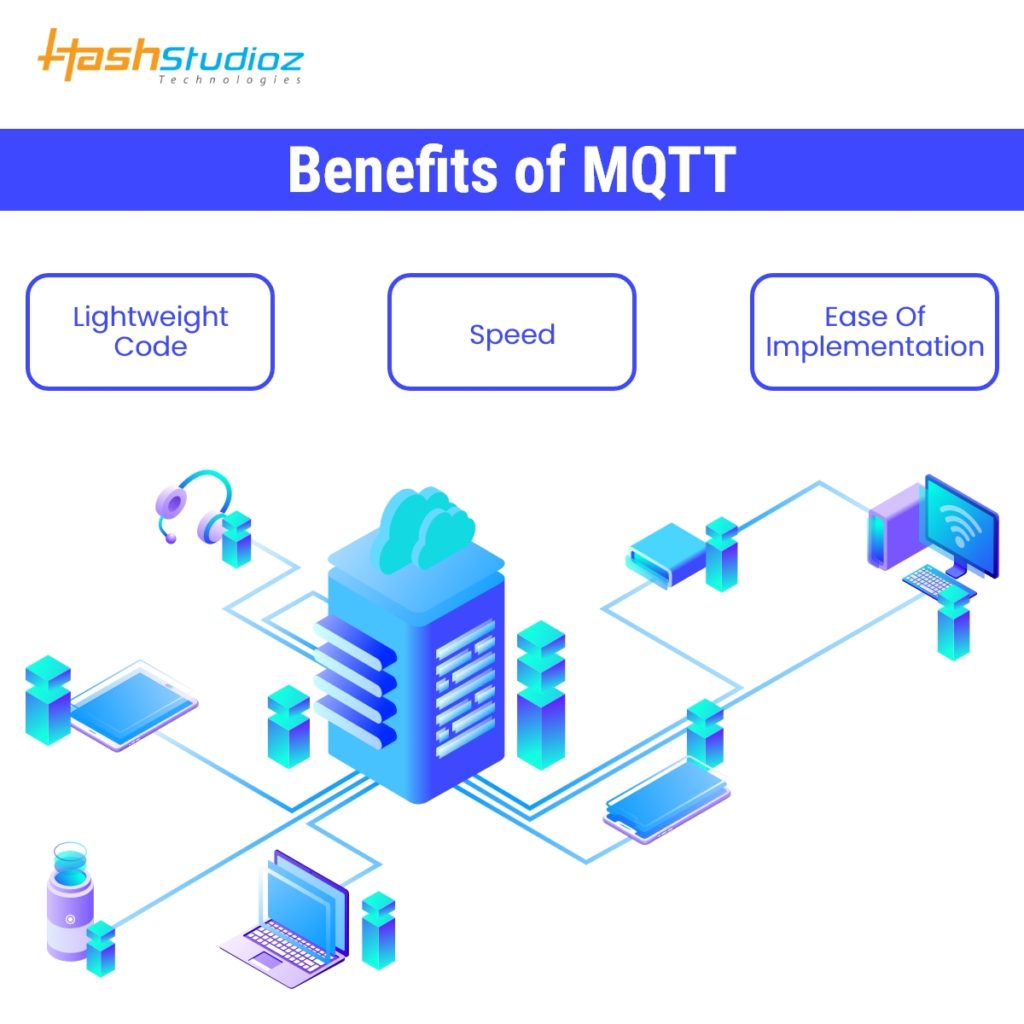MQTT (Message Queue Telemetry Transport) is a lightweight, open, and efficient messaging protocol designed to facilitate communication between devices in the Internet of Things (IoT) ecosystem, connecting them seamlessly.
MQTT was originally created in 1999 by Dr. Andy Stanford-Clark of IBM and Arlen Nipper of Arcom (now Eurotech). The protocol was designed to be lightweight and efficient so that it could be used on devices with limited resources.
MQTT is a very efficient protocol. It uses very little bandwidth, which is important for devices with limited resources. MQTT is also very reliable. It can withstand network disruptions, and it can recover from lost messages.
Table of Contents
What are the components of an MQTT architecture?
In brief, MQTT is one of the popular Messaging protocols on top of the TCP/IP protocol. The abbreviation of MQTT is Message Queuing Telemetry Transport. To understand the Concept of MQTT we need to understand the following terms:
1) Publish/Subscribe: It is a protocol where one device can publish a message, and another device can subscribe to topics to receive the messages.

2) Messages: Messages are information exchanges between devices, They could be commands or data.
3) Topic: A topic, is the place a device wants to put or retrieve a message to/from.
4) Broker: The broker is responsible for receiving all the messages, Filtering the messages, and publishing the messages to all subscribed clients.
How Does MQTT Work In IoT Projects?

As mentioned above, MQTT is designed as a lightweight messaging protocol that uses publish/subscribe operations to exchange data between clients and the server.
It is the most suitable protocol for home automation and Internet of Things projects. If you want to start making your own projects using MQTT; here’s how it should be implemented in four stages:
- Connection: A client starts by creating a Transmission Control Protocol/Internet Protocol (TCP/IP) connection to the broker by using either a standard port or a custom port defined by the broker’s operators.
- Authentication: Authentication is part of the transport and provides application-level security. With Transport Layer Security (TLS), the successful validation of a client certificate is used to authenticate the client to the server. On the application level, the MQTT protocol enables a username and password for authentication.
- Communication: During the communication phase, a client can perform publish, subscribe, unsubscribe, and ping operations. Typically messages have payloads. It is up to the developers to define the payloads it could be binary data, Plain text, JSON, XML, or something else. There are a couple of other attributes of MQTT messages: Quality of services and retaining the flag.
- Termination: When a publisher or subscriber wants to terminate an MQTT session, it sends a DISCONNECT message to the broker and then closes the connection. We refer to this as a graceful shutdown because it allows the client to reconnect easily by providing its client identity and resuming where it left off.
Do you have home automation or other IoT project requirement?
We help you build the most efficient solution.
The Benefits of MQTT

- Lightweight code footprint: Devices need only a few lines of code in order to get up and running with the MQTT protocol.
- Minimized data packets: MQTT is very energy-efficient. This makes it great for connecting with devices that are battery-powered or have little CPU power.
- Speed: MQTT operates in real-time, with no delays outside of QoS.
- Ease of implementation: MQTT already has libraries in programming languages such as Elixir and Python.
- Last will and testament: If a client disconnects unexpectedly, you can set instructions to send messages to all subscribers to remedy the situation.
- Retained messages: Each topic can have one retained message that a client automatically receives when it subscribes (like a pinned post on social media).
Being an IoT development company at Hashstudioz we are using the MQTT protocol in the device-to-device communication. Here is an explanation of one example project:
Monitoring of Smart Socket/Plug connected devices: —
Smart home products make it easy to control lights and appliances with a tap of your mobile. Moreover, the main appeal behind the solution is its ability to connect to home wireless networks. In addition, you can control the smart plug and switch like any traditional switch by tapping its face to turn a light on or off. Additionally, you can manage it through a mobile app.
The technology used for cloud application was as:

1) Node.Js Back end
2) MongoDB
3) React.js Front end
4) Mosca was used as node.js based MQTT broker.
5) ESP-12 Wi-Fi module based on core processor ESP8266
6) Relays to turn on/off
This is all about What is MQTT and how can you use MQTT for connection with the Internet of Things.
Frequently Asked Questions
Q. How is MQTT used in IoT?
A. Using MQTT in IoT is simple if you follow the steps mentioned above. Consequently, no wonder MQTT ranks among the most commonly used protocols in IoT projects. Furthermore, it uses publish/subscribe operations to exchange data between MQTT clients and the MQTT server.
Q. How do I connect my Internet to IoT?
A. There are various ways to connect the internet to IoT. That further depends on the role of the device as mentioned in the options below:
- you need to access this device only on the home/business network.
- The device only connects to a remote server.
- You need to access the device from the Internet using a Static Public IP Address
- you need to access the device from the Internet using a Dynamic Public IP Address
Now according to the role, the connection is set to establish. Which we will cover in our upcoming blog.
Q. Can MQTT work without the Internet?
A. Yes, MQTT may work without the internet. See, it only needs an IP network because it uses TCP/IP for communication between the subscriber or publisher and the broker. An IP network doesn’t mean you need internet access. Two devices and one ethernet cable make a network. That’s it!!
Q. What is the difference between MQTT and HTTP?
A. MQTT is different from HTTP.
- MQTT is a data-centric protocol whereas HTTP is a document-centric protocol.
- HTTP serves as the request-response protocol for client-server computing but often lacks optimization for mobile devices. In contrast, MQTT’s publish/subscribe model ensures reliability throughout the entire system.
- MQTT is faster than HTTP.
Q. Is MQTT UDP or TCP?
A. You can say it uses both protocols. It relies on the TCP protocol for data transmission, while a variant, SN, operates over other transports like Bluetooth or UDP.

